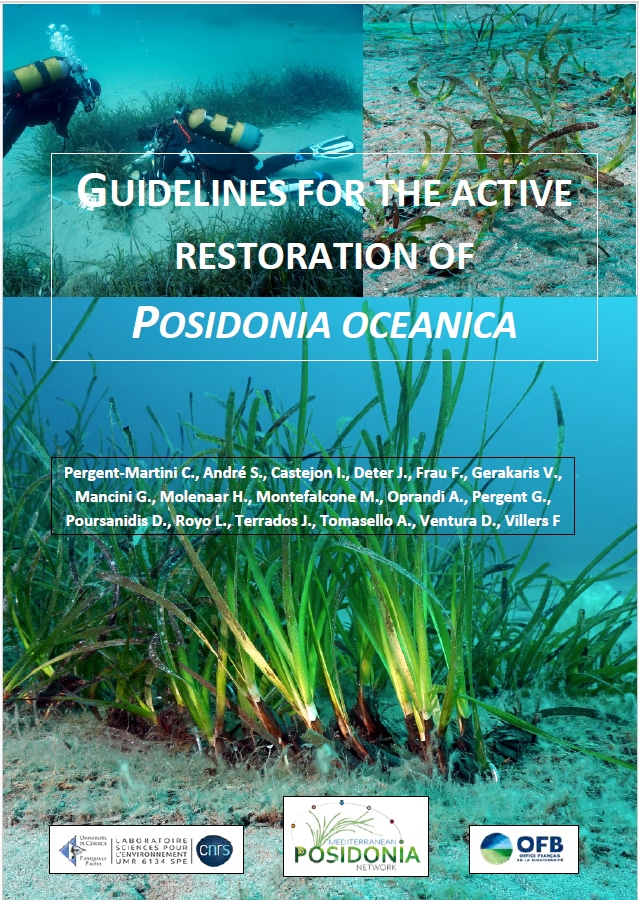English version available here
Pergent-Martini C., André S., Castejon I., Deter J., Frau F., Gerakaris V., Mancini G., Molenaar H., Montefalcone M., Oprandi A., Pergent G., Poursanidis D., Royo L., Terrados J., Tomasello A., Ventura D., Villers F., 2024. Guidelines for Posidonia oceanica restoration. Report Cooperation agreement Mediterranean Posidonia Network (MPN), French Biodiversity Agency (OFB) & University of Corsica Pasquale Paoli (UCPP) N°OFB-22-1310: 29 p. + Appendices.
 Abstract: As initiated by other international or regional agreements (e.g. OSPAR, UNEP-MAP), seagrass restoration operations require an analysis of existing practices in order to identify what is “working” (operational techniques) and what is still considered as Research and Development (R&D). This initiative aims to guide public policies, Marine Protected Areas (MPA) managers, decision-makers, associations and scientists. The decision-making process, regulations and source of funding will be different if the restoration project is a working or R&D operation. The main objectives of this restoration guidance are as follows:
Abstract: As initiated by other international or regional agreements (e.g. OSPAR, UNEP-MAP), seagrass restoration operations require an analysis of existing practices in order to identify what is “working” (operational techniques) and what is still considered as Research and Development (R&D). This initiative aims to guide public policies, Marine Protected Areas (MPA) managers, decision-makers, associations and scientists. The decision-making process, regulations and source of funding will be different if the restoration project is a working or R&D operation. The main objectives of this restoration guidance are as follows:
• Present and describe case studies showcasing successful Posidonia restoration measures, particularly those employing nature-based solutions,
• Analyze previous unsuccessful experiments in order to identify the causes of failure,
• Investigate main topics R&D would necessary,
• and by doing this, develop structured Posidonia restoration guidelines involving the successive steps from the need to restore, the planning, the site selection, the actual restoration measures, the monitoring and the assessment. The report does not discuss the different European / national regulations that can be required when transplanting Posidonia.

